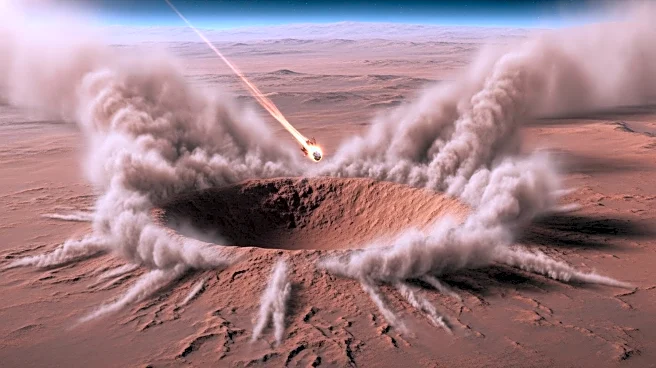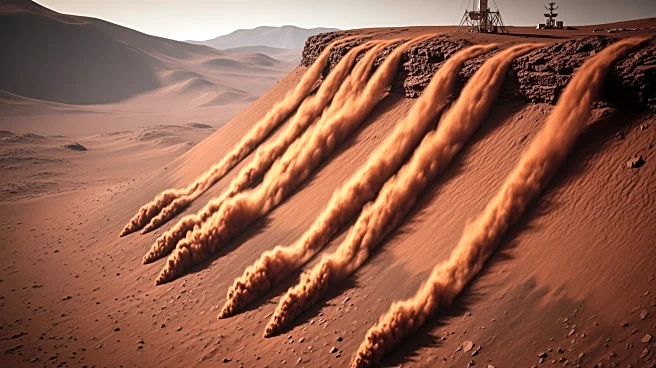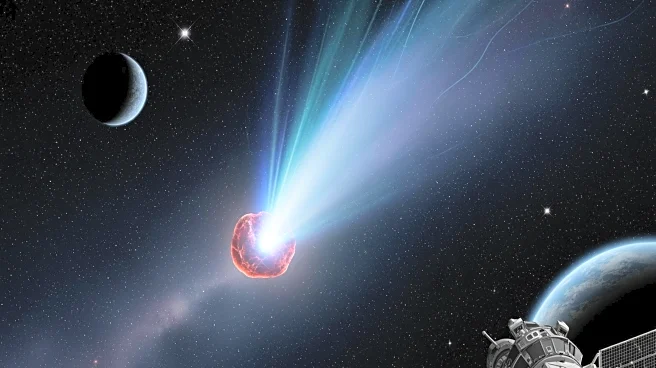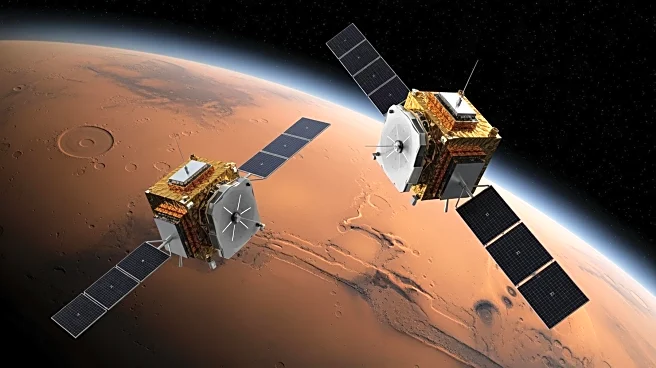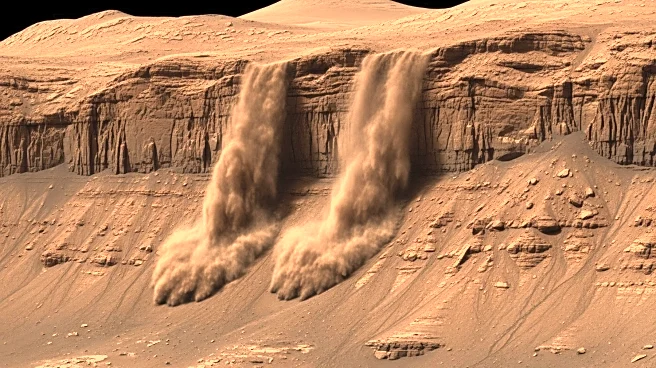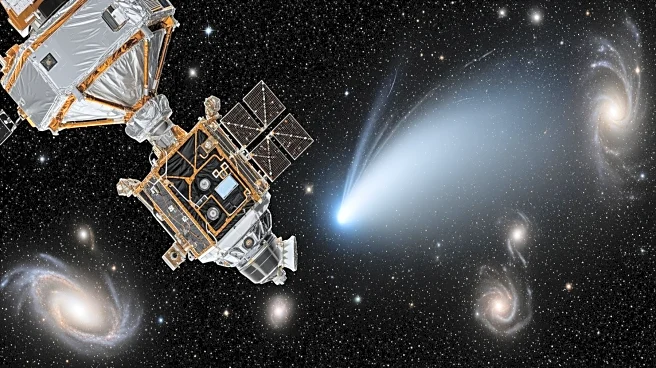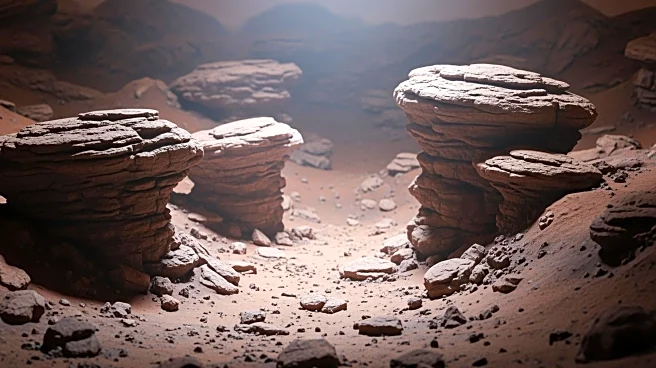What's Happening?
The European Space Agency's ExoMars Trace Gas Orbiter has captured a rare meteoroid impact on Mars, which triggered dust avalanches and created new streaks on the slopes of Apollinaris Mons. The event
was recorded on December 24, 2023, and the image covers an area of approximately six square kilometers. Scientists have determined that the impact and streak formation occurred between 2013 and 2017. The streaks are believed to form when layers of fine dust slide off steep terrain, driven by dry processes such as wind and dust activity. A study published in Nature Communications indicates that fewer than one in a thousand streaks are caused by meteoroid impacts, with most resulting from seasonal changes stirring up dust and wind.
Why It's Important?
This observation is significant as it provides insights into the dynamic processes occurring on Mars today. Understanding these processes is crucial for comprehending the planet's ancient past and its potential habitability. The findings contribute to the broader scientific goal of mapping Mars' surface for water-rich locations and inventorying atmospheric gases. Such research is vital for future missions aimed at exploring Mars' history of water and assessing its ability to support life. The study also highlights the importance of long-term, continuous, and global-scale observations to reveal Mars' dynamic nature.
What's Next?
The ExoMars Trace Gas Orbiter will continue to image Mars from orbit, aiming to enhance understanding of the planet's surface and atmosphere. Future missions may focus on obtaining more detailed observations to further explore Mars' potential habitability and its history of water. Scientists will likely continue using advanced technologies, such as deep learning algorithms, to analyze Mars' surface features and dynamics. These efforts are expected to contribute to the planning and execution of future exploratory missions to Mars.
Beyond the Headlines
The study of Mars' surface dynamics has broader implications for understanding planetary processes in the solar system. The research may inform strategies for future exploration and potential colonization efforts. Additionally, the findings could influence the development of technologies for remote sensing and data analysis in planetary science.
